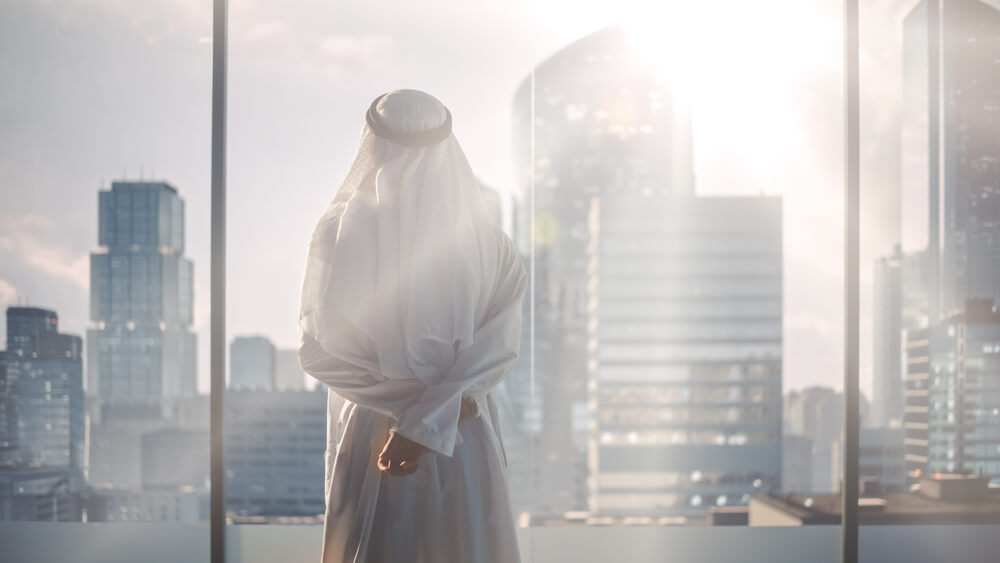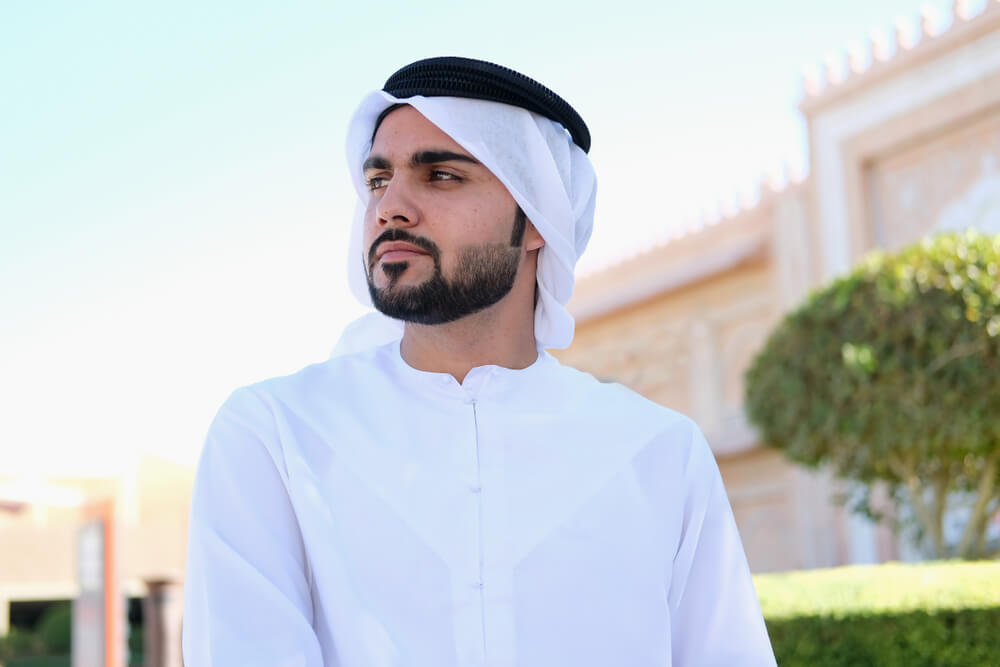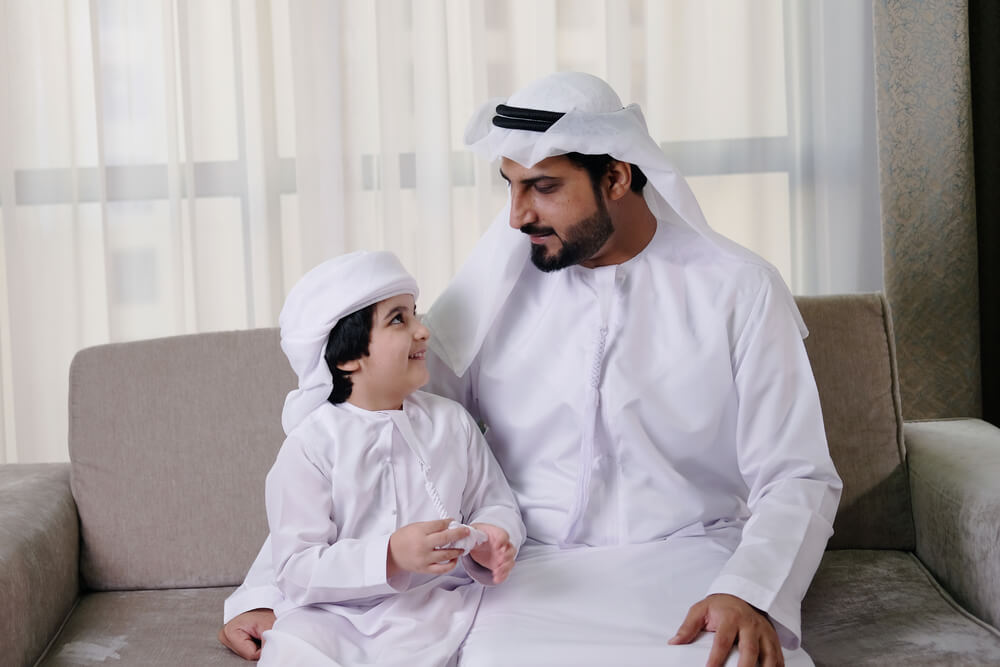Ghutra – The Essential Headscarf Of Emirati Men
Headscarves and headwear have always been deeply rooted in Emirati culture and symbolize pride according to the nation. The Emirati culture has a rich heritage that has been passed down through generations. One of the most distinct and significant cultural symbols is the Ghutra, a headdress worn by Emirati men.
The practice of wearing a it in UAE is similar to wearing turbans in other cultures. It looks so ethereal on Emirati men wearing Ghutra as it distinguishes them from all the other civilizations. Emirati Ghutra has a specific style that’s different from other Gulf countries.
You’ll get to see the difference as you move further while reading this article, so let’s explore with us! But before we dig deeper into the article, let’s take a quick look at what a Ghutra is.
The Ghutra is a rectangular or square piece of cloth draped over the head and secured with a ring on the head. It is usually white and made of cotton or lightweight material, which helps protect the wearer from harsh desert conditions.

The Ghutra is more than just a piece of cloth to cover the head; it is deeply ingrained in Emirati culture and history. The importance is similar to the day it originated, and it’s a matter of honor for Emiratis.
The Ghutra has a long and rich history in the Emirate of Abu Dhabi. Bedouins first wore Ghutras as protection from the sun and sand. Over time, the Ghutra UAE has become a symbol of Emirati culture and a part of their everyday Emirati dressing.
Let’s move further and discuss how it evolved and what significance it holds in Emirati culture.
History
Ghutra has evolved, and the one you see people wearing today is quite different from what it looked like years ago.
Some believed that the Ghutra was first introduced to the Emirates by Bedouins who migrated from Saudi Arabia. However, there are also some misconceptions; some people believe that the old Arabs mainly adopted Ghutra in UAE.
There’s another true belief that says Ghutra was basically worn by UK military men who were in Saudi Arabia during the British Protectorate. They used to wear them because the typical military caps weren’t wearable in the hot climate of deserts.
Some historical glimpses preserved in the shape of pictures from the early 19th century in Saudi Arabia confirmed that wearing Ghutra was a common practice. However, securing a Ghutra and Agal together was not a common thing.
Shemagh, a red-white patterned Ghutra, is known to have its roots in Jordan and Iraq and was commonly seen in the 1950s.
The Ghutra was originally made of wool or camel hair, but the fabric has evolved and is now made of cotton or lightweight material.
Significance And Culture Behind Wearing Ghutra
The specific Ghutra meaning is the headscarf worn by people in Gulf countries to complete their traditional look. But when you ask an Emirati about Ghutra, they’ll symbolize it as a thing of honor and pride.
For them, Ghutra is all about their prestigious traditions, and they won’t ever give up on wearing it because that’s how they get identified in the world. It has become such an important part of Emirati culture that it is hard to think of them without Ghutra.
Wearing a Ghutra is not just about following the Emirati culture; it has many other purposes. For example, it helps protect the wearer from severe desert conditions like extreme heat, sandstorms, and wind. It also helps protect the head and face from harmful sun rays and sunburn.

In the 19th century, Emiratis simply tied the Ghutra on their head and left their faces uncovered when the weather was fine. But as soon as the sandstorms hit the deserts, they tied the hanging cloth of Ghutra around their face, leaving their eyes open. That’s how they protected themselves from the sand that flew everywhere.
But now, this practice is long forgotten; there’s a reason, Emiratis have luxuries to protect themselves from sandstorms.
But wearing a Ghutra is seen as a mark of respect for the elders and those in authority. It is also seen as a symbol of unity among Emiratis.
Types
There are many different types of Ghutras available in the market, each with its unique pattern and color. Although there are only two basic types of it known to date, there’s a bit of difference in the way it’s tied or worn depending on the region’s traditions.
1. The most common type of Ghutra in Dubai is the white version of it, which most Emiratis wear. The other name of this Ghutra is Keffiyah, and it’s usually made of cotton. Arabs wear Ghutra with a black or white colored headband called Agal, which secures it in its place.
2. The other one is the red-and-white checkered Ghutra which is also commonly worn by Emiratis. It’s often called Shemagh and considered different because of its pattern.
Emiratis wear both these types of Ghutra as per their choices or preference.
Difference Between Keffiyah And Ghutra
Keffiyeh is an Arabic word that means “from the north.” It is also known as the Saudi Ghutra because it was first introduced in Saudi Arabia, but now it’s commonly called Ghutra Dubai. That’s because the Emiratis who migrated from Saudi Arabia to UAE brought this tradition with them, and that’s how it became a part of Emirati culture.

The other type of Ghutra is Shemagh which is a bit more common in Jordan and Iraq. It got its name from the Arabic word “Sumagh,” which means “to cover.”
The main difference between Keffiyah and Shemagh is their pattern; Keffiyah has plain white color, while Shemagh has a red-and-white checkered pattern.
How To Wear Ghutra
Before you head to your desert Safari trip, you should know how to wear a Ghutra to nail your look and look like an Arab. A specific way of wearing a Ghutra must be followed to look like a complete Emirati.
First, you need to choose the right type of Ghutra, depending on the occasion or place you’re going. For example, if you’re going to a formal event, you must go for a white Ghutra. And if you’re going to a friend’s place or any informal gathering, you can wear a checkered Ghutra.

You might get frustrated as your initial attempts can go wrong; the process is not too tricky. First, you have to follow the given steps.
1. When you buy a Ghutra, a fine square piece of cloth, you must wear it yourself. So first of all, fold that piece in half, make sure the fold is diagonal, and get a triangle after folding.
2. Fold again, but this time from the broader side to the opposite side, don’t fold it in half, instead fold it halfway.
3. Now place the folded cloth on your head, the wider side should be on your forehead, and the folded side needs to be on the backside. Next, swing the open ends to your sides.
4. Take the side of the cloth on your left side and fold it like you’re twisting it. You need to make two folds of the width.
5. Now, tie this twisted side around your head; secure the end in the fold you made in the first step.
6. Repeat the same process with the other side dangling on your right, but twist this side outwards rather than inwards.
7. The thing you did with the left end will get repeated here; tie this end around your head and secure it the same way in the folds as you did before.
8. Here it ends, and you’re done with your perfect Ghutra Dubai look; you’re good to go!
If you want to wear the other style of it, you’ll wear it on your head and secure it with the Agal. But, again, ensure you’re putting it on the right way; the pointy end of the Ghutra should be facing downwards.
Frequently Asked Questions
What is a taub Ghutra and Agal?
Taub or Thawb is the traditional Emirati dress for men. It is a long, loose-fitting garment that goes down to the ankles. Ghutra is a square or rectangular piece of cloth that is folded and worn on the head. Agal is a black cord that is used to secure the Ghutra in place.
Why is a Ghafiya worn under the Ghutra?
A Ghafiya is a white and simple Muslim prayer cap that most Emiratis and Locals of Gulf countries wear on their head under the Ghutra. They wear it either to keep their head cool from the severe exposure to the sun or to secure the Ghutra from slipping down the head.
Emirati Ghutra is an important part of their culture and heritage. It is worn by men daily and is considered a symbol of status and masculinity. However, wearing it isn’t restricted to locals; you can also wear it when you’re exploring Dubai on your trip. So buy a Kandura and Ghutra and look like an Emirati for a day!
